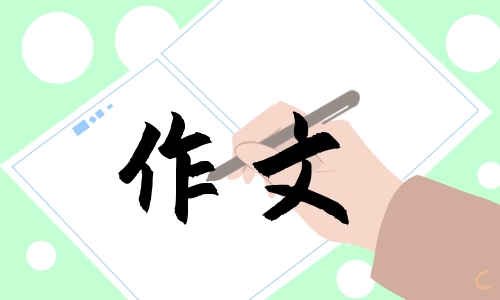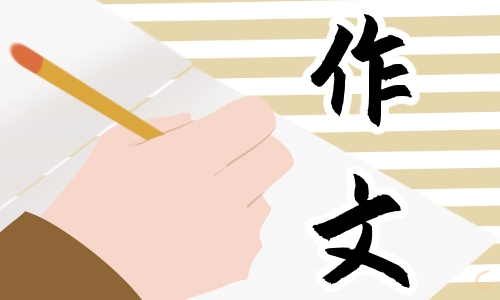对知识的渴求是人类的自然意向,任何头脑健全的人都会为获取知识而不惜一切。下面小编为大家带来六年级上册必备英语知识点,欢迎大家参考阅读,希望大家喜欢!

比较级
注意只有同类事物才可进行比较。
如:My eyes are bigger than hers.Your school bag is heavier than mine.My computer is nicer than Nancy’s.My brother is stronger than me.
have,has
表示某人有(has用于第三人称单数);There is/ are;
There was/ were表示某地存在有
注意There be句型的就近原则
单数或不可数用there is /was;
复数用there are/ were.
本身就是复数的词
眼镜glasses;耳机earphones;鞋shoes;裤子trousers等词本身是复数。
如:My glasses were on the chair just now.
但如果表示这双,这副,一双的时候用单数
如:There is a pair of chopsticks on the plate.This pair of earphones is for you.
五个元音字母分别是Aa,Ee,Ii,Oo,Uu;
一个的用法
a用于辅音前不是辅音字母前;an用于元音前不是元音字母前。
如:There is an ’s’,a ‘t’,a ‘u’,a ‘d’ ,an ‘e’,an ‘n’,and a ‘t’ in the word ‘student’.
时间表示法
有两种:
(1)直接读时钟和分钟。
如6:10读成six ten;7:30读成seven thirty;8:45读成eight forty-five;
(2)用to与past表示。
在半小时包括半小时以内用几分past几点
如:6:10读成ten past six;7:30读成half past seven;
过了半小时用下一个钟点差几分
如7:45读成a quarter to eight;9:50读成ten to ten;
基数词变序数词的方法
基变序有规律,结尾加上th;一二三特殊例,结尾字母t、d(即first,second,third);
八去t,九去e,ve要用f替(即eigh—eighth;nine—ninth;five-- fifth ;twelve—twelfth);
ty改y为ie后加th别忘记(即整十数如twenty—twentieth;forty—fortieth);
几十几十位为基个位为序(如第二十一为twenty-first)。
另外强调序数词前一定要加the。
日期的表示法
用the+序数词+ of +月
如:三月三日the third of March;
12月25日the 25th of December.
both表示两者都
如:My parents are both teachers.
all表示三者以上都
如:The students are all very excited.
节日的表示法
有day的节日前用on.
没有day的节日前用at,
如:at Christmas;on Christmas Day;at New Year;on New Year’s Day.
法知识点归纳4
1、动词:行为动词、be动词、情态动词。
(1)行为动词原形、+s/es、+ed、+ing,具体判断方法如下:
(2)be动词
a、Am--was Is --was Are--were口诀:我用am,你用are,is用在他她它,所有复数全用are。
b、肯定和否定句
I am (not) from London.He /She is(not) a teacher.My hair is(not) long.Her
eyes are(not) small.
c、一般疑问句Am I …? Yes,you are.No,you aren't.Are you/they…? Yes,we/ they are.
No,we/ they aren't.Is the cat fat? Yes,it is.No,it isn't.
is、am、are为一类,一般用于一般现在时、现在进行时和一般将来时中。
was和were为另一类,一般用于一般过去时。
(3)情态动词
can、must、should、would、may。情态动词后动词总是用原形。(不受其他任何条件影响)
2、名词
这里强调两点:不可数名词都默认为单数,所以总是用is或者was。
如何加后缀:
a.一般情况下,直接加-s,如:book-books,bag-bags,cat-cats,bed-beds
b.以s.x.sh.ch结尾,加-es,如:bus-buses,box-boxes,brush-brushes,watch-watches
c.以"辅音字母+y"结尾,变y为i,再加-es,如:family-families,strawberry-strawberries
d.以"f或fe"结尾,变f或fe为v,再加-es,如:knife-knives
e.不规则名词复数:man-men,woman-women,policeman-policemen,policewoman-policewomen,
mouse-mice child-children foot-feet ,.tooth-teeth fish-fish,people-people,
Chinese-Chinese,Japanese-Japanese
3、形容词(包括副词)
形容词表示某一事物或的特征,副词表示某一动作的特征。
形容词和副词只有两种形式:原形和+er。
未作比较的情况下就用原形,比较时就+er。
两个重要特征:as……as中间一定用原形,有than的时候一定+er。
4、人称代词和物主代词
人称代词物主代词
单数复数单数复数
主格宾格主格宾格形容词性(短)名词性(长)形容词性(短)名词性(长)
第一人称I me we us my mine our ours
第二人称you you you you your yours your yours
第三人称he him they them his his their theirs
she her her hers
it it its its
人称代词:
有主格和宾格之分。
一般动词前用主格,动词后用宾格。
物主代词:
有两类:形容词性物主代词(短的)和名词性物主代词(长的)
一般看后面有没有名词,如有,就用形容词性物主代词(短的);如无,就用名词性物主代词(长的)。
5、数量词
我们学过两类:基数词和序数词。基数用于表示数量多少,而基数词用于表示次序,常在日期中出现。序数词的前面一般都加the。
6、冠词
有a、an、the。a和an的区别:an用于元音音素(一般就是元音字母aeiou)前,a用于辅音音素前。
六年级上册英语知识点总结
动词过去式、现在分词的不规则变化:
be是--was,were--being
begin开始--began--beginning
build建筑--built--building
buy买--bought--buying
can能--could--无
come来--came--coming
copy拷贝--copied--copying
do做--did--doing
draw画--drew--drawing
drink喝--drank--drinking
drive驾车--drove--driving
eat吃--ate--eating
feel感觉--felt--feeling
find找寻--found--finding
fly飞--flew--flying
forget忘记--forgot--forgetting
get得到--got--getting
give给予--gave--giving
go去--went--going
grow成长--grew--growing
have有--had--having
hear听--heard--hearing
keep保持--kept--keeping
know知道--knew--knowing
learn学习-learnt,learned--learning
let让--let--letting
make做--made--making
may可以--might--无
mean意思--meant-meaning
meet见面--met--meeting
must必须--must--无
put放--put--putting
read读--read--reading
ride骑--rode--riding
ring响--rang--ringing
run跑--ran--running
say说--said--saying
see看见--saw--seeing
sing唱歌--sang--singing
sit坐--sat--sitting
sleep睡觉--slept--sleeping
speak 讲话--spoke--speaking
spend花钱--spent--spending
stand站立--stood--standing
sweep打扫--swept--sweeping
swim游泳--swam--swimming
take拿到--took--taking
teach教--taught--teaching
tell讲述--told--telling
think思考--thought--thinking
will意愿--would--无
write写--wrote--write
六年级上册英语常考知识点
1、动词:行为动词、be动词、情态动词。
(1)行为动词原形、+s/es、+ed、+ing,具体判断方法如下:
(2)be动词
a、Am--was Is --was Are--were口诀:我用am,你用are,is用在他她它,所有复数全用are。
b、肯定和否定句
I am (not) from London.He /She is(not) a teacher.My hair is(not) long.Her
eyes are(not) small.
c、一般疑问句Am I …? Yes,you are.No,you aren't.Are you/they…? Yes,we/ they are.
No,we/ they aren't.Is the cat fat? Yes,it is.No,it isn't.
is、am、are为一类,一般用于一般现在时、现在进行时和一般将来时中。
was和were为另一类,一般用于一般过去时。
(3)情态动词
can、must、should、would、may。情态动词后动词总是用原形。(不受其他任何条件影响)
2、名词
这里强调两点:不可数名词都默认为单数,所以总是用is或者was。
如何加后缀:
a.一般情况下,直接加-s,如:book-books,bag-bags,cat-cats,bed-beds
b.以s.x.sh.ch结尾,加-es,如:bus-buses,box-boxes,brush-brushes,watch-watches
c.以"辅音字母+y"结尾,变y为i,再加-es,如:family-families,strawberry-strawberries
d.以"f或fe"结尾,变f或fe为v,再加-es,如:knife-knives
e.不规则名词复数:man-men,woman-women,policeman-policemen,policewoman-policewomen,
mouse-mice child-children foot-feet ,.tooth-teeth fish-fish,people-people,
Chinese-Chinese,Japanese-Japanese
3、形容词(包括副词)
形容词表示某一事物或的特征,副词表示某一动作的特征。
形容词和副词只有两种形式:原形和+er。
未作比较的情况下就用原形,比较时就+er。
两个重要特征:as……as中间一定用原形,有than的时候一定+er。
4、人称代词和物主代词
人称代词物主代词
单数复数单数复数
主格宾格主格宾格形容词性(短)名词性(长)形容词性(短)名词性(长)
第一人称I me we us my mine our ours
第二人称you you you you your yours your yours
第三人称he him they them his his their theirs
she her her hers
it it its its
人称代词:
有主格和宾格之分。
一般动词前用主格,动词后用宾格。
物主代词:
有两类:形容词性物主代词(短的)和名词性物主代词(长的)
一般看后面有没有名词,如有,就用形容词性物主代词(短的);如无,就用名词性物主代词(长的)。
5、数量词
我们学过两类:基数词和序数词。基数用于表示数量多少,而基数词用于表示次序,常在日期中出现。序数词的前面一般都加the。
6、冠词
有a、an、the。a和an的区别:an用于元音音素(一般就是元音字母aeiou)前,a用于辅音音素前。
六年级上册必备英语知识点(实用)相关文章:
★ 六年级英语知识点归纳总结
★ 六年级英语上册重点单词句型语法复习资料
★ 六年级英语知识点梳理
★ 六年级英语知识点大总结
★ 六年级英语语法知识点知识总结
★ 人教版六年级英语重点
★ 六年级英语语法学习(2)
★ 六年级英语上册Unit 8复习教程
★ 六年级英语上册第六单元知识点总结
上一篇:精选六年级英语相关知识点精选






